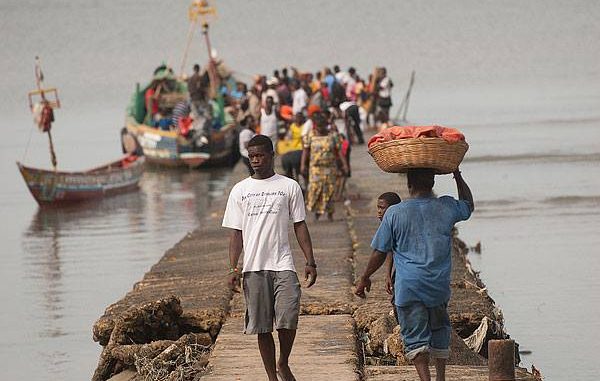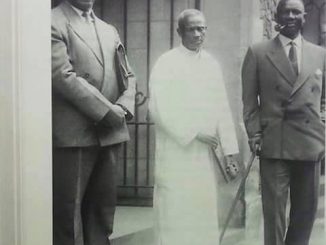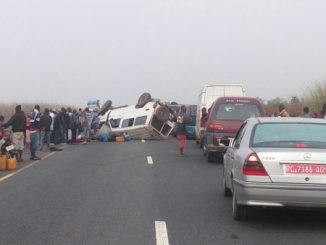
By Victor Ako Mengot
Introduction
The principal role of transport is to provide or improve access to different locations for businesses and individuals, for both freight and personal movements. For the business sector, this involves connections between businesses and their suppliers, between businesses and other businesses, and between businesses and their markets. For the household sector, transport provides people with access to workplaces, schools and shops. It connects them to social, recreational, community and medical facilities for personal and leisure activities.
The direct effects of transport investment are to reduce transport time and costs by reducing travel times, decreasing the operating costs of transport and enhancing access to destinations within the network. Transport investment may also mitigate any economic disbenefits, for example, by reducing congestion or the risk of injury. These incremental benefits of transport investments may be measured through conventional cost-benefit analysis.
Other indirect consequences of transport investments should also be considered in the evaluation of transport projects. These include effects on productivity and the spatial pattern of economic development. In the long term, transport investments contribute to economic development by stimulating a variety of inter-connected economy-wide processes, which can yield spatial and regional effects that augment overall productivity
It is against this backdrop that an analysis is being undertaken to evaluate the President’s agenda for transport during the State Opening of the Fifth Parliament of Sierra Leone. The President declared that “the culture of intermodal development is seldom embraced” and that full utilization will be made of intermodal transport development by his government. He also announced that his government will conduct appropriate feasibility study for the re-institution of the National Railway Scheme.
Intermodal Transport Development Concept
Intermodal transport involves the use of the multiple modes of transportation like air, water, land via Aircraft, ship, rails and trucks. This system can be used for the transportation of freight and passengers or both. For example, in a transportation system for freight the cargo is packed in containers and that container is transported to destination via multiple modes like ships, aircrafts, rails, trucks etc. without removing the cargo from the container. Since there is not much handling of container required this system is very safe and secure and requires less handling time. Similarly, intermodal transportation for passenger works in similar way. The passenger uses different mode to reach to their destination. We use this mode in our daily life. For example, a person reaching to an airport by using the bus, train or taxi service is going through the intermodal passenger transportation system.
The concept of an intermodal transport system addresses current market necessities opening new possibilities for national and regional transport due to the enhanced competitiveness compared to a single mode such as road or rail transport. Moreover, the increasing transport demand and the resulting growth in traffic volume, leads amongst other things to significantly overcrowded roads and is also a key reason for environmental pollution and climate change. At the same time, transport is vital for economic growth and a fundamental part of all industrialized nations. To mitigate the disadvantages and strengthen the advantages, the development of new, efficient and more environmentally friendly transport systems is a crucial challenge for modern societies – thus the need for a new approach to the development of an integrated system of transport using the intermodal concept.
Transport for Regional Integration
The President has also indicated that he will study some of the proposals developed by the previous government and will advance it further if it is in the national interest. There can be no better example than the Sulima Integrated transport project.
In 2014, Three of the four MRU Embassies in the People’s Republic of China (Guinea, Liberia and Sierra Leone) considered a Sub Regional Development Project, towards an economic free zone, known as the Makona River Free Zone Development Project. This was to enhance the thriving historical cross-border transnational market trading between the communities of Guekedou in Guinea, Koindu in Sierra Leone and Foya in Liberia. The Makona River Free Zone (MRFZ) is being designed to work on an area across Sierra Leone, Liberia and Guinea in West Africa, and through construction of harbour, railway and energy related infrastructure works, promote the utilization and development of natural resources including mining, forest-agriculture fishing, amongst others.
Through MRFZ cooperation, the three countries intend to work together to promote the local production, West Africa economic integration, cross boundary investment, and achieve the regional social and economic prosperity. Major components of the project include:
• Foya, Koindu and Guekedou Free Zone, including land development, industrial facilities to build rubber processing plants in Liberia, urban infrastructure facilities, social service facilities and institutions and hydro power stations for the development of natural resources.
• Sulima Sea Port/Railway, including construction of Sulima Sea Port, railway from Sulima to the Free Zone to allow the three countries develop their natural resources; and
• Construction of railway from Free Zone (Foya, Koindu and Guekedou) to Siguiri and Voinjama, development of industrial park in Siguiri area, amongst others.
According to reports in a national online newspaper publication, the Embassies of Guinea, Liberia and Sierra Leone in the People’s Republic of China had held discussions with Blue Seafront (BSF) Group, a China based conglomerate with a strong focus on project development and financing. BSF Group is an extension of the Parakou Group, a shipping conglomerate registered in Singapore and operating from Hong Kong with a global coverage specialized in shipping and other related businesses.
The above project must be given serious consideration by the Directorate of Presidential Infrastructural Projects and Service Delivery (DPIPSD) under the newly appointed Chief Minister in collaboration with the Governments of Guinea and Liberia.
Intermodal National Transport System (Land & Sea Transport)
Water transport is the cheapest and the oldest mode of transport. It operates on a natural track and hence does not require huge capital investment in the construction and maintenance of its track except in case of canals. The cost of operation of water transport is also very less. It has the largest carrying capacity and is most suitable for carrying bulky goods over long distances. It has played a very significant role in bringing different parts of the world closer and is indispensable to foreign trade.
With a navigable coastline and rivers traversing the country from North to South, Sierra Leone consideration should also be given to the development of an intermodal transport system involving a combination of land and sea transport. From Rokupr in the North through to Bonthe and Sulima in the South, it is possible to improve landing sites for coastal sea transport to improve access into other areas of the country and as an alternative to the existing Highway Network. The Port of Pepel has played a significant part in providing access to international trade for the export of iron ore to the international market while Bonthe which once provided landing for slave ships is now underutilized.
While the former has benefited the explorers of our mineral resources without a corresponding benefit to the national trade and/or people movement, the later can be developed to boost tourism around the Bonthe Island, where there is an historic site that should be preserved for tourism. Ghana has Elmina Castle and so does Senegal with Goree Island – both countries have enhanced tourism to these locations in their respective countries especially for African Americans in search of the history behind the Trans-Atlantic Slave Trade.
Coastal transport is one of the most important means of transport for carrying goods from one part of the country to another. Many Sierra Leoneans are familiar with the movement of agricultural produce from the Bullom area to Freetown using boats with landing facilities at the famous ‘King Jimmy’ jetty.
The President has also reiterated his commitment to improving agriculture and food production to reduce the country’s dependence on imports of basic food items including rice, the staple food of most Sierra Leoneans. There can be no better way of promoting this ideal than by developing a fully functional coastal transport system linking the Western Region and other agricultural produce areas.
Urban Mixed Mode Commuting
The capital Freetown has become a haven for people from other regions in Sierra Leone in search of employment, improved standard of living and access to other social amenities such as health and education. There has been a trend in population shift from the East and Central area to the areas around the western peninsular. Places such as Lumley, Goderich and Juba are attracting both the professional class and working class for different reasons. The former is escaping from the congested traditional settlements in the central Freetown area, while the latter are looking for settlement area to erect local housing that are encroaching on the environment in the peninsula area. The effect of this settlement pattern was evident in the recent mudslide disaster that featured widely in the national and international media.
This apparent shit in population is in itself posing challenges for urban planners especially in terms of transport for accessing the Central Business District (CBD) where the majority of the professional class go for work purposes on a daily basis. The resultant effect is traffic congestion around key areas such as Juba Bridge, Lumley Roundabout and the Congo Cross junctions during the morning and evening peak hours. One of the solution to this problem is the need to develop coastal transport for mixed urban commuting.
The congestion along the main commuter routes during morning and evening peak hours from from Juba, Goderich through to Wilkinson road can be partially reduced if consideration was given to the development of a coastal system of transport from the tip of the York peninsular through to the Kissy Ferry terminal and even to Pepel. The project can be easily developed through a Public Private Partnership (scheme) with the government providing landing strips for commuter boats at Goderich, Murray Town, Government Wharf and eventually to Kissy Ferry terminal.
Parking facilities for private cars and commuter parks for public transport including Kekehs (Tricycles) could be constructed adjacent to these coastal transport terminals to support a ‘Park and Ride’ and ‘Hop and Ride scheme. With these facilities, public transport operators and car owners will be able to access the coastal transport provided by sea transport operators such as Seabird and Sea coach who already provide access to the airport at Lungi. There is also the possibility of such an intermodal transport system attracting investment from local entrepreneurs.
Finally, the choice of transport mode is one of the most fundamental steps in the transport planning process. This is because there is a key role to be played by the national government, urban transport planners and public transport provides. Moreover, the Trip maker’s choice of travel directly affects the level of congestion and level of service of existing urban road networks. Addressing the transport challenges be it in the Western Region (Freetown); linking regional population centres; and expanding sub-regional trade should be given urgent consideration under the ‘New Direction’ especially if Sierra Leone is to meet its commitment under the UN Sustainable Development Goals (SDGs) insofar as they relate to the economic and social empowerment of all citizens.



